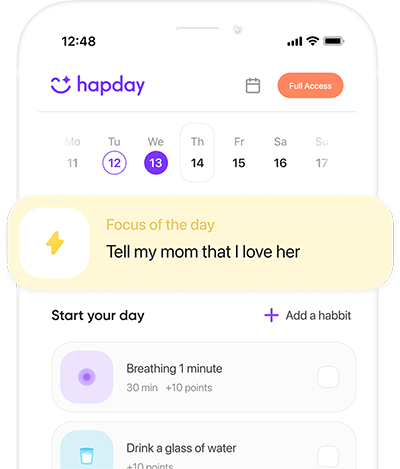Life these days? It zooms by faster than a TikTok scroll. Honestly, finding a moment to just breathe and check in with yourself—it’s tough, isn’t it? Yet, there’s a rising star in the realm of self-help strategies, especially adored by Millennials and Gen Z women: mindfulness journaling. This practice is gaining traction for its ability to boost self-awareness and help make sense of life’s ups and downs. More than just putting pen to paper, it’s about tuning into your inner dialogue and making peace with it.
Table of Contents
- Understanding Mindfulness Journaling
- Benefits of Mindfulness Journaling
- How to Start a Mindfulness Journaling Practice
- Mindfulness Journaling Prompts
- Overcoming Common Challenges
- The Science Behind Mindfulness Journaling
Understanding Mindfulness Journaling
So, what is mindfulness journaling, anyway? At its core, it’s really a mash-up of mindfulness and journaling. Picture this: you’re writing with purpose, focusing intently on the present without casting harsh judgments on yourself (because, seriously, who needs that?). It’s a way to process emotions and recognize the little patterns and thought loops that often hijack our minds.
Way back in 2015—gosh, that feels like a different era, doesn’t it?—a study in the Journal of Clinical Psychology threw some scientific weight behind the power of mindfulness practices like journaling. Turns out, just a few minutes daily can zap stress and help you tune into your subconscious, bringing those personal fears and motivations into clearer focus (Khoury et al., 2015).
Benefits of Mindfulness Journaling
1. Enhanced Self-Awareness
Dig deeper into this practice, and you’ll find it opens a window to your soul. Writing down your thoughts and feelings isn’t just cathartic; it helps you pinpoint emotional triggers and see how your behaviors might be tied to them. According to the American Psychological Association, this kind of self-reflection can seriously boost mental health and emotional smarts (Smyth & Pennebaker, 2019).
2. Stress Reduction
Stress? Ugh, it feels like it’s the Millennial anthem. With a staggering 70% of this generation reporting symptoms tied to stress, it’s no wonder everyone’s looking for relief (American Psychological Association, 2020). Enter mindfulness journaling as a savior. Writing becomes an emotional dumping ground, a release valve, where the steam of pent-up tension can dissipate.
3. Improved Focus and Clarity
Engaging in mindfulness through journaling could sharpen your focus like a well-honed pencil. The very act forces you to zero in on the present, which, in turn, boosts cognitive abilities and decision-making prowess. Mrazek et al. (2013)—yep, another study—revealed in Psychological Science that mindfulness training can do wonders for focus and sharp thinking in young adults. Isn’t that fascinating?
How to Start a Mindfulness Journaling Practice
1. Set Aside Time Daily
Begin small. I mean, seriously—just 10-15 minutes. Figure out a time when you can hang up the ‘Do Not Disturb’ sign and dive in headfirst. Whether you’re a bright-eyed morning person or a night owl winding down, make it stick. Consistency, they say, is part of the magic.
2. Create a Mindful Environment
Turning your space into a zen den might help. A calming corner free from chaos—that’s ideal. Light a candle, maybe, or let some soothing tunes play. You’d be amazed at how these little touches can elevate your journaling gig.
3. Focus on the Present
Kick-off each session with a few deep breaths. Don’t rush—just ease into capturing what’s happening now—your thoughts, your feels, and the way your body feels. This grounding practice connects you more deeply with who you are in this instant.
Mindfulness Journaling Prompts
Let’s admit it—coming up with what to write can be daunting. Prompts can be your guide, nudging you into richer reflection:
- What am I thankful for today? How does this gratitude shape my day?
- Name three emotions swirling within me. What triggered them?
- Think of a recent challenge. How did I deal with it, and what lessons bubbled up in the aftermath?
Using prompts like these can unlock new layers of personal insight. Try it—you might be surprised!
Overcoming Common Challenges
1. Writer’s Block
Yes, the infamous blank page stare-down. Beat it by diving into free writing. No, don’t worry about grammar glitches or getting it perfect. Let your words flow like a river—they’ll lead you somewhere interesting.
2. Lack of Consistency
The key snag: keeping it regular. Pair this new habit with something you already do. Maybe it’s jotting down thoughts with your morning latte or before you crash at night. The easier you make it, the better your chances.
3. Fear of Judgment
Let’s face it—there’s the lurking dread of judgment when baring your soul. Here’s the thing: this is your practice, totally personal. Forget perfection. Just show up and be real with yourself.
The Science Behind Mindfulness Journaling
Science nerds rejoice! There’s enough evidence out there to prove that regular reflective writing ramps up mindfulness, eases depressive and anxious tendencies, and builds psychological resilience (Baikie & Wilhelm, 2005). Journaling kindles empowerment, bringing clarity straight to your doorstep.
To sum it all up, diving into the world of mindfulness journaling is like embarking on an adventure to find the true you. It’s not just self-exploration—it’s beginning to understand and appreciate your authentic self. So, what are you waiting for? Time to grab that pen and uncover a whole new universe within.
Ready to dive deeper into this transformative practice? Check out the journaling techniques and resources available at Hapday. Start embracing your journey to self-discovery today!

